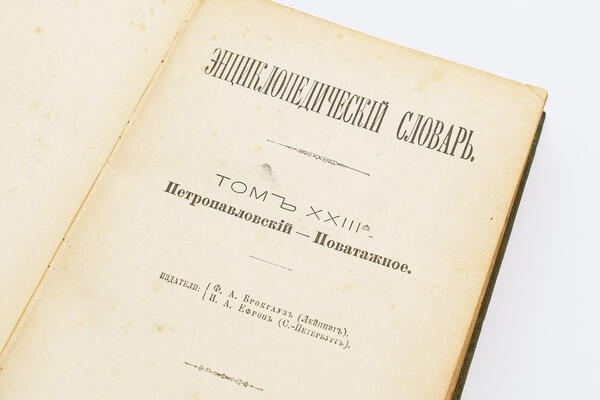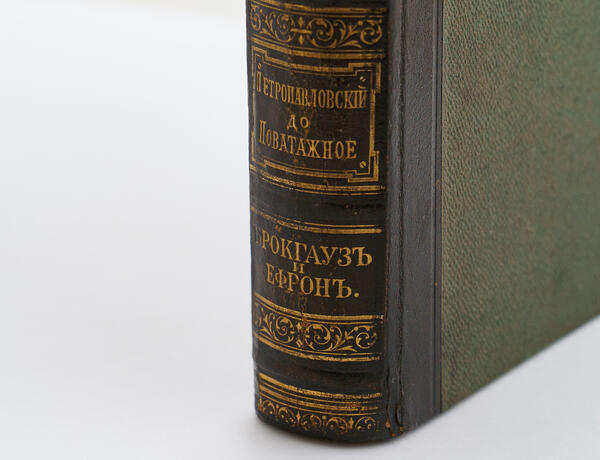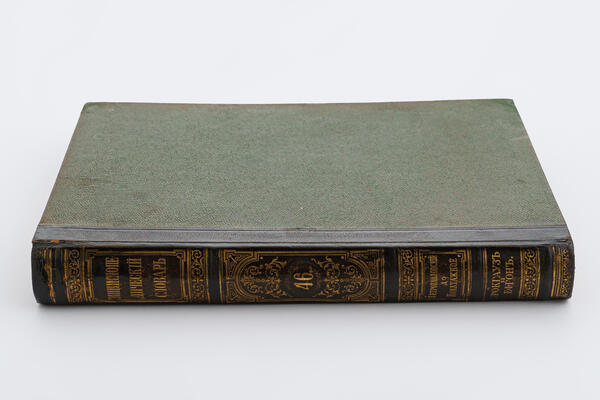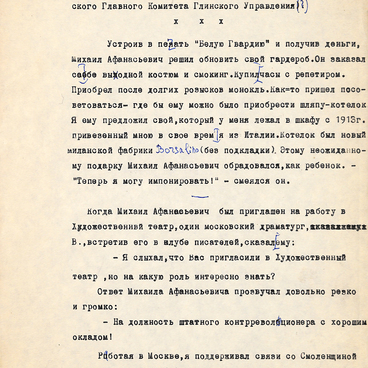Friends and acquaintances of Mikhail Bulgakov visiting him noticed the writer’s bookshelves full of encyclopedias and dictionaries. The photo of Bulgakov’s study in the apartment at 35a Bolshaya Pirogovskaya Street shows all the volumes of the Encyclopedia of Brockhaus and Efron.
In the late 1920s, Mikhail Afanasyevich began working on a novel about the devil, later called “The Master and Margarita”. And even its first edition included scenes in Yershalaim. To collect historical information, Bulgakov primarily used reference books and dictionaries from his home library. In the Encyclopedia of Brockhaus and Efron Bulgakov carefully studied the sections “Demon”, “Demonology”, “Demonomania”, “Witchcraft”, “Satan”, “Devil”.







